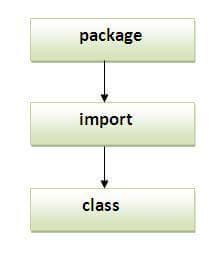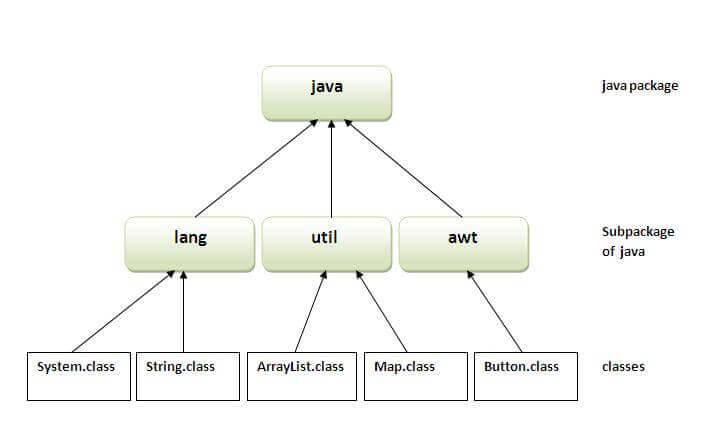Java Package
Definition :
A java package is a group of similar types of classes, interfaces and sub-packages.
Package in java can be categorized in two form, built-in package and user-defined package.
There are many built-in packages such as java, lang, awt, javax, swing, net, io, util, sql etc.
Here, we will have the detailed learning of creating and using user-defined packages.
Advantage of Java Package
1) Java package is used to categorize the classes and interfaces so that they can be easily maintained.
2) Java package provides access protection.
3) Java package removes naming collision.
Simple example of java package
The package keyword is used to create a package in java.
package mypack;
public class Simple
{
public static void main(String args[])
{
System.out.println("Welcome to package");
}
}
How to compile java package
If you are not using any IDE, you need to follow the syntax given below:
javac -d directory javafilename
For example
javac -d . Simple.java
The -d switch specifies the destination where to put the generated class file. You can use any directory name like /home (in case of Linux), d:/abc (in case of windows) etc. If you want to keep the package within the same directory, you can use . (dot).
★ How to run java package program
You need to use fully qualified name e.g. mypack.Simple etc to run the class.
To Compile: javac -d . Simple.java
To Run: java mypack.Simple
Output: Welcome to package
The -d is a switch that tells the compiler where to put the class file i.e. it represents destination. The . represents the current folder.
⭐ How to access package from another package?
Answer--> There are three ways to access the package from outside the package.
- import package.*;
- import package.classname;
- fully qualified name.
1) Usingpa ckagename.*
Example of package that import the packagename.*
2) Using packagename.classname
Example of package by import package.classname
3) Using fully qualified name

Subpackage in java
Package inside the package is called the subpackage. It should be created to categorize the package further.
Let's take an example, Sun Microsystem has definded a package named java that contains many classes like System, String, Reader, Writer, Socket etc. These classes represent a particular group e.g. Reader and Writer classes are for Input/Output operation, Socket and ServerSocket classes are for networking etc and so on. So, Sun has subcategorized the java package into subpackages such as lang, net, io etc. and put the Input/Output related classes in io package, Server and ServerSocket classes in net packages and so on.
To Compile: javac -d Simple.java To Run : java com.learneverytime.core.Simple | ||||||



0 Comments